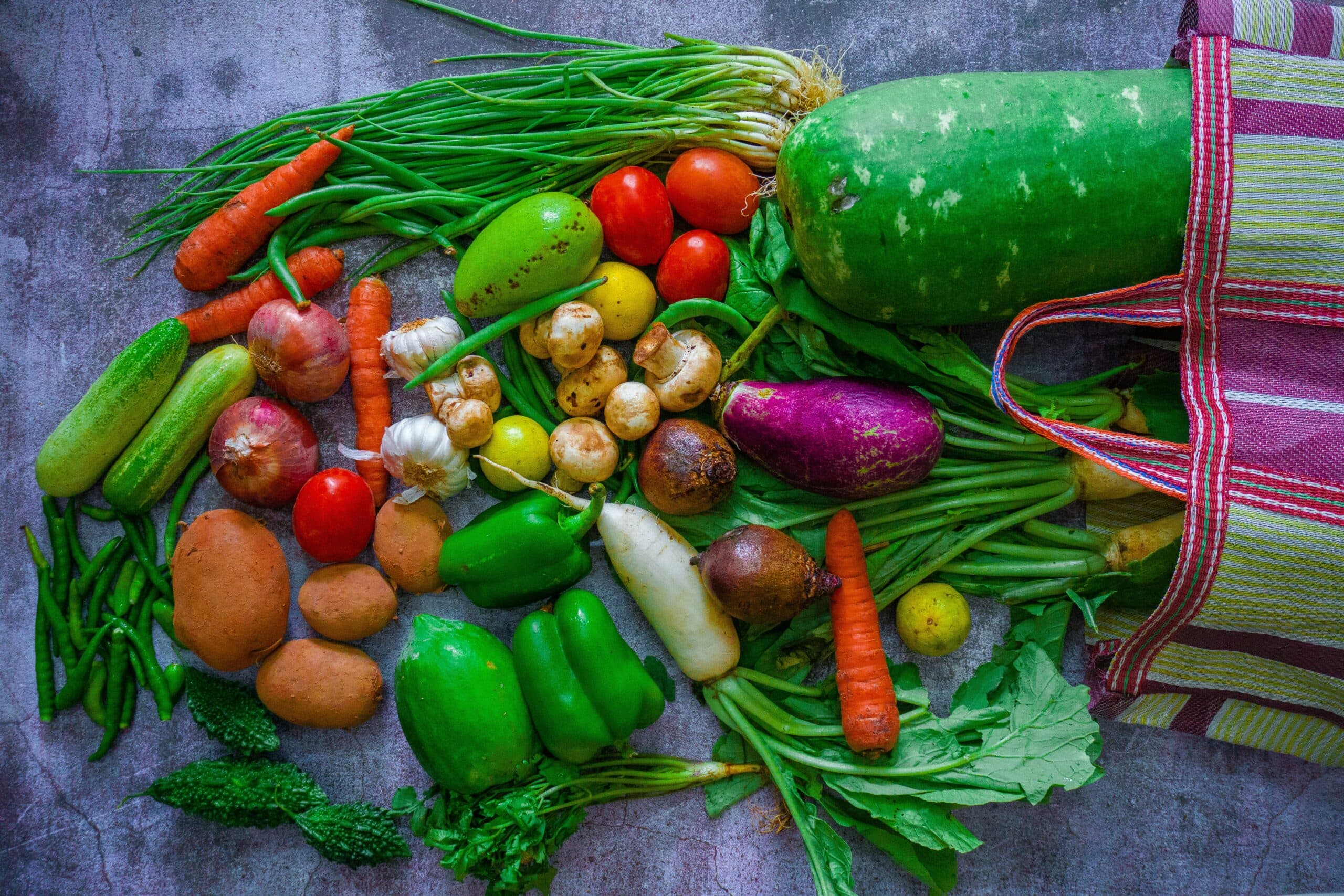
October 30, 2025
Seasonal Grocery Shopping: Eating in Season Boosts Nutrition
Why Seasonal Grocery Shopping Matters
Eating in season isn’t just a culinary trend, it’s a return to nature’s rhythm and one of the simplest ways to enhance your nutrition. Seasonal grocery shopping connects your plate to the natural harvest cycles that have sustained humans for centuries.
When produce is grown and harvested during its natural season, it’s richer in nutrients, fresher in flavor, and better for the planet. In contrast, out-of-season fruits and vegetables often travel thousands of miles, losing vital vitamins and antioxidants along the way.
Learning how to grocery shop seasonally helps you get the most from your food, in taste, quality, and nourishment.
The Science Behind Seasonal Nutrition
According to a study published in the Journal of Food Science, produce harvested at its peak contains significantly higher nutrient density than food stored or transported long distances. For example:
-
Spinach and broccoli can lose up to 50% of their vitamin C within a week of harvest.
-
Strawberries and tomatoes ripened naturally on the vine have more antioxidants than those grown out of season in greenhouses.
In short, seasonal produce not only tastes better, it feeds your body better.
Spring: Fresh Starts and Detoxifying Greens
Spring brings renewal, both for nature and your diet. After a winter of heavier foods, this season offers light, cleansing produce that supports liver function and digestion.
Spring Seasonal Produce (U.S.)
-
Asparagus
-
Spinach
-
Strawberries
-
Artichokes
-
Peas
-
Radishes
These foods are rich in vitamin K, folate, and antioxidants, which help flush out toxins and replenish energy levels. Think of spring as your body’s reset button, fueled by vibrant greens and fresh flavors.
Summer: Hydration and Antioxidant Power
Summer produce is colorful, juicy, and hydrating, perfect for warm weather and outdoor activity. Many summer fruits and vegetables are naturally high in water and phytonutrients that protect your skin and cells from sun exposure.
Summer Seasonal Produce (U.S.)
-
Watermelon
-
Berries (blueberries, raspberries, blackberries)
-
Zucchini
-
Tomatoes
-
Bell peppers
-
Corn
These foods are bursting with vitamin C, lycopene, and beta-carotene, all powerful antioxidants that promote cell repair and hydration. In fact, studies from the USDA show that eating antioxidant-rich produce during the summer months can help reduce oxidative stress from heat exposure.
Fall: Building Immunity and Warmth
As temperatures cool, the earth produces heartier crops to prepare us for winter. Fall foods are grounding, nutrient-dense, and packed with immune-supporting vitamins.
Fall Seasonal Produce (U.S.)
-
Apples
-
Sweet potatoes
-
Pumpkin
-
Kale
-
Brussels sprouts
-
Cranberries
These ingredients are rich in fiber, vitamin A, and vitamin C, helping strengthen the immune system and support gut health. Fall is the perfect time to focus on comfort foods with a healthy twist, think roasted root vegetables, soups, and warm grain bowls.
Winter: Comfort and Nutrient Preservation
Winter’s harvest may seem sparse, but it’s full of deeply nourishing foods that help your body stay warm and resilient. Many winter vegetables are naturally high in complex carbohydrates and minerals that sustain energy during colder months.
Winter Seasonal Produce (U.S.)
-
Carrots
-
Beets
-
Winter squash
-
Cabbage
-
Citrus fruits
-
Onions
Winter foods provide vitamin C for immunity, iron for energy, and complex carbs for steady warmth. Plus, citrus fruits like oranges and grapefruits, at their freshest this time of year, add brightness and boost your body’s defenses against seasonal colds.
How to Grocery Shop Seasonally
Learning how to grocery shop for seasonal produce doesn’t have to be complicated, it just takes awareness and a few smart strategies.
1. Use Seasonal Food Guides
Bookmark reliable sources like the USDA Seasonal Produce Guide or LocalHarvest.org, which list what’s in season by region.
2. Visit Local Farmers Markets
Shopping at farmers markets is one of the easiest ways to buy in-season food. You’ll also support local growers and reduce the environmental cost of long-distance shipping.
3. Pay Attention to Price and Quality
In-season produce is often cheaper because it’s abundant and doesn’t require expensive storage or transportation. If something looks unusually pricey or lacks flavor, it’s likely out of season.
4. Buy Frozen Seasonal Produce
Frozen fruits and vegetables are often picked at peak ripeness and flash-frozen, locking in nutrients. This makes them an excellent choice when certain foods are out of season.
The Hidden Benefits of Seasonal Grocery Shopping
-
Better Taste: Naturally ripened produce simply tastes better.
-
Higher Nutrient Content: Fresh, local harvests retain vitamins that degrade in storage.
-
Lower Cost: Seasonal abundance keeps prices down.
-
Supports Local Agriculture: Your spending helps small farmers thrive.
-
Reduces Carbon Footprint: Shorter transport distances mean fewer emissions.
When you learn how to grocery shop seasonally, you’re aligning your health goals with environmental sustainability, a win for both you and the planet.
Overcoming Common Seasonal Shopping Challenges
What if I live in a region with limited seasonal variety?
→ Focus on what’s available locally and supplement with frozen or canned produce (look for low-sodium and no-added-sugar options).
How do I stay consistent year-round?
→ Keep a rotating list of your favorite recipes for each season. When one ingredient goes out of season, substitute with a comparable local option.
Isn’t organic better than seasonal?
→ Both have benefits, but if you can’t afford both, choose seasonal first. Locally grown seasonal produce often uses fewer chemicals and reaches your table faster.
The Takeaway: Nature Knows Best
Seasonal grocery shopping reconnects you to nature’s wisdom, nourishing your body in harmony with the environment. By choosing in-season foods, you’ll enjoy richer flavor, better nutrition, and a more balanced diet throughout the year.
Healthy eating doesn’t have to be complicated. It’s about returning to the basics, eating fresh, local, and in tune with the seasons.
Call to Action
Ready to take your nutrition to the next level?
Contact Aisle Insights for a personalized seasonal meal plan designed around your goals, region, and dietary needs.
Recent Posts

10 Grocery Shopping Habits That Make Your Diet Healthier
December 17, 2025

How Balanced Nutrition Affects Mental Health
December 16, 2025

Nutrition Coaching vs. Diet Plans for Sustainable Results?
November 5, 2025

How to Grocery Shop for a Sustainable, Healthy Lifestyle
October 22, 2025

Meal Planning 101: Shop Smart for a Week of Healthy Meals
October 21, 2025
